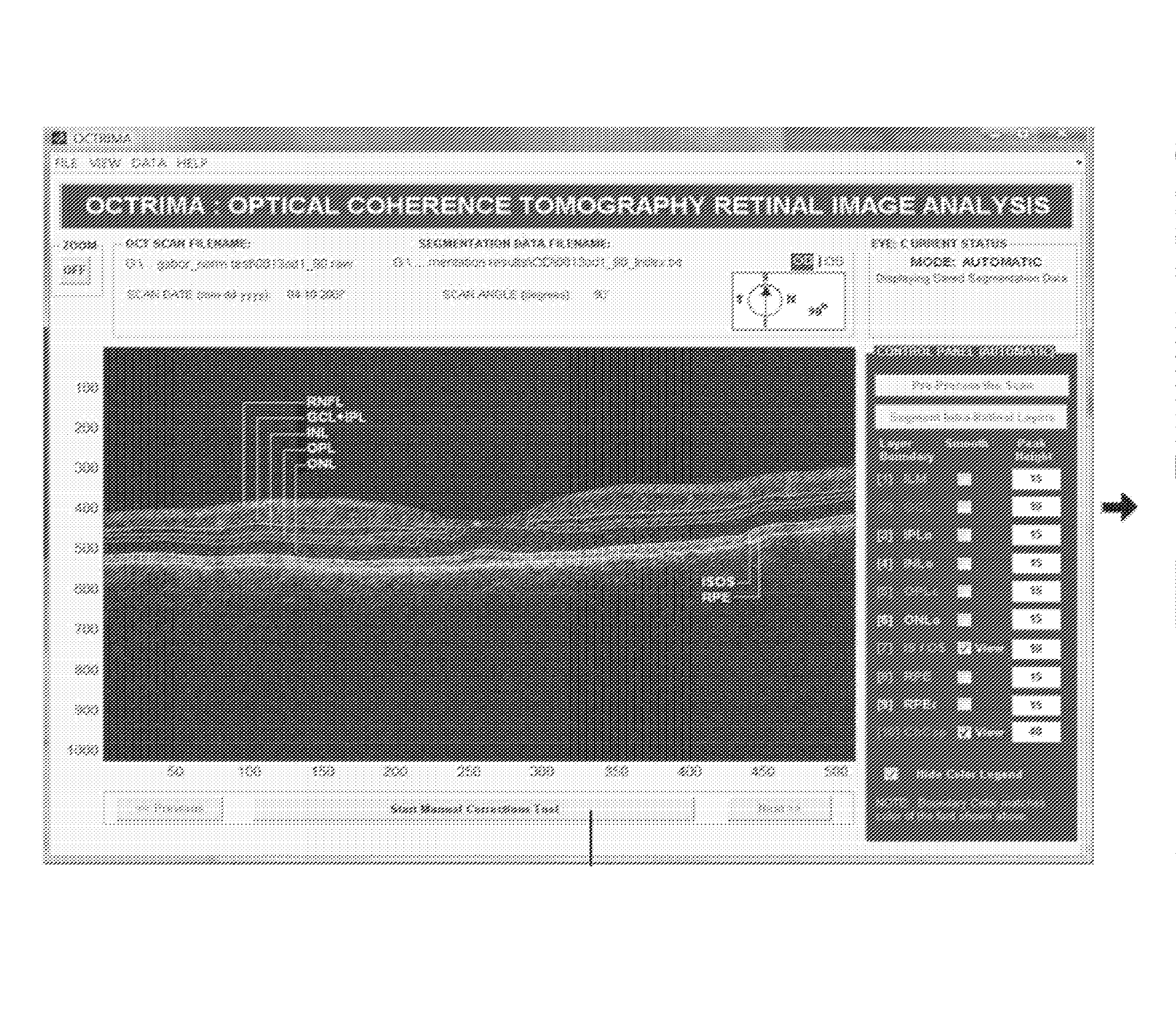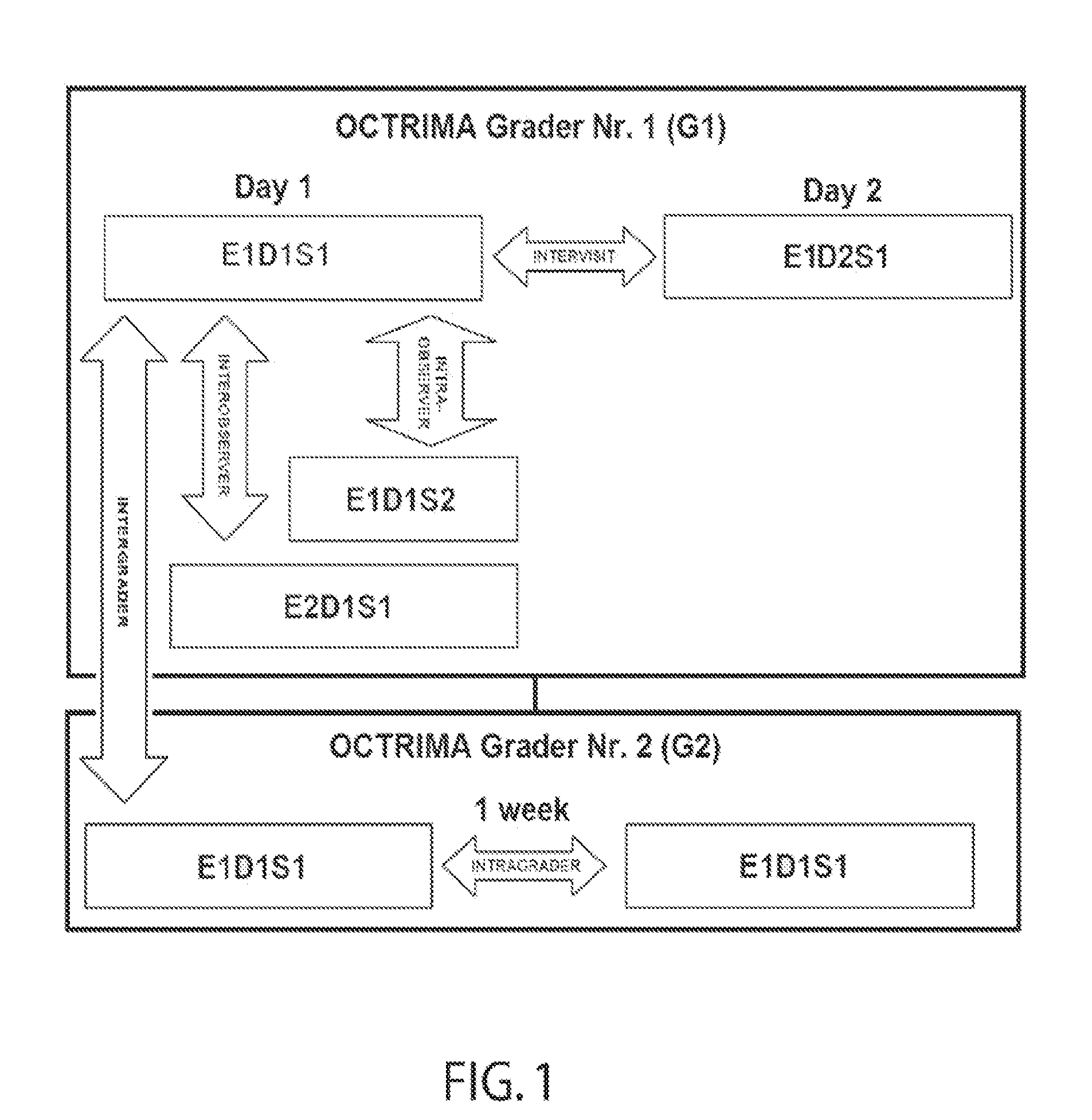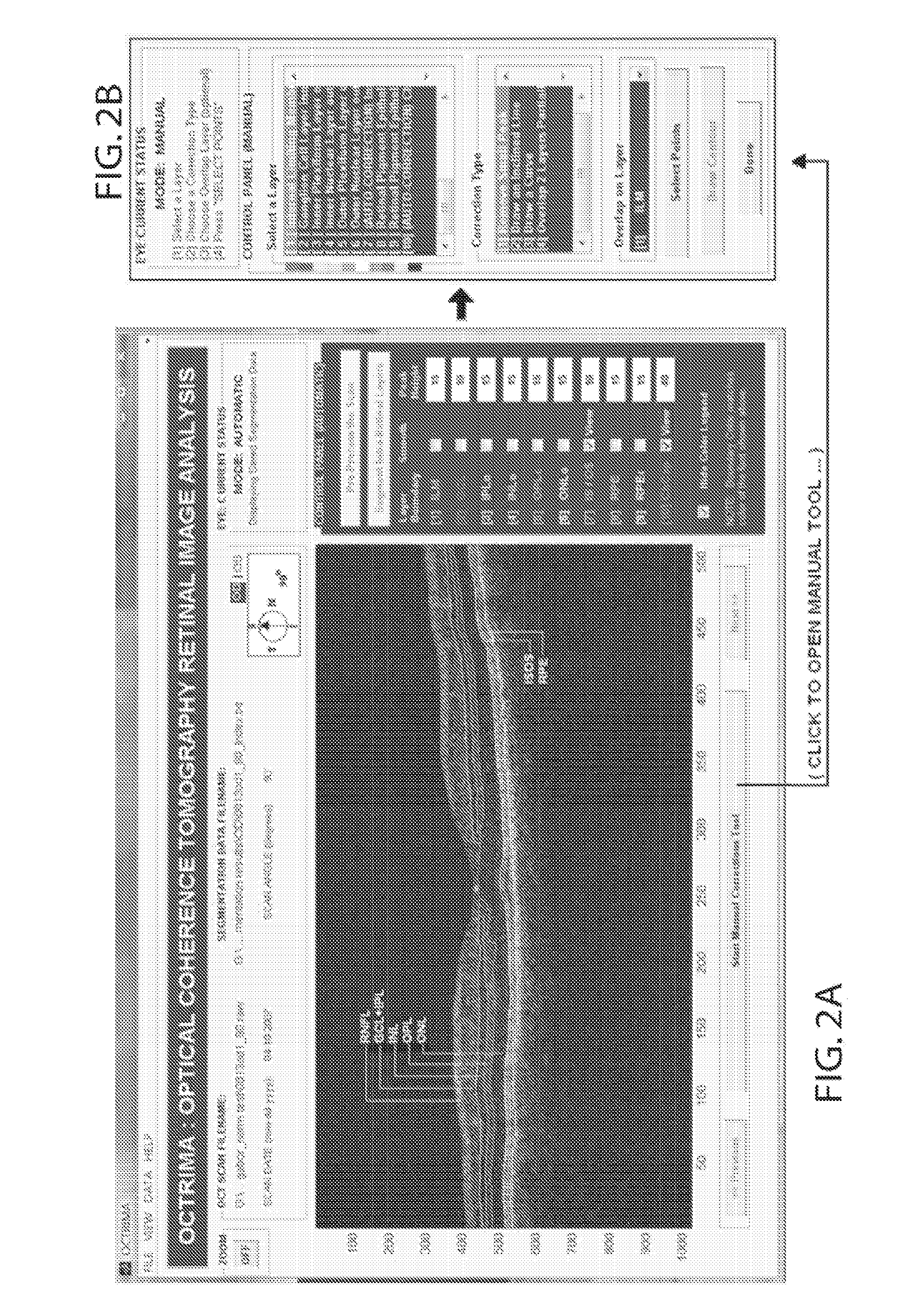System and Method for Early Detection of Diabetic Retinopathy Using Optical Coherence Tomography
a technology of optical coherence tomography and diabetic retinopathy, applied in the field of ophthalmology, can solve the problems of low oct signal variance, limited image quality, and diabetes mellitus as a leading cause of vision loss
- Summary
- Abstract
- Description
- Claims
- Application Information
AI Technical Summary
Problems solved by technology
Method used
Image
Examples
example 1
OCTRIMA: a Novel Tool for Automated Analysis and Interactive Quantitative Evaluation of Clinical Stratus OCT Data
[0072]Software Implementation: OCTRIMA was developed using the Matlab graphical user interface design environment (GUIDE) tool that allows interactive design of a graphical window along with variables and commands linked to it (The Mathworks, Natick, Mass.). Specifically, OCTRIMA is a research software application package that integrates the automated and semi-automated segmentation algorithm along with the manual correction tool into a user-friendly graphical user interface (GUI). The OCTRIMA software originally written in Matlab code is converted into C and requires the MatLab Component Runtime (MCR), which must also be installed on the end-user's computer. It also requires a PC with the WINDOWS™ operating system installed (Microsoft Corp., Redmond, Wash.). The application essentially provides dual functionality in a single software package by combining image enhancemen...
example 2
Early Detection of Retinal Thickness Changes in Diabetes using Optical Coherence Tomography
[0121]The purpose of this study was to explore the ability of intraretinal layer segmentation to locally detect early retinal changes in diabetic patients using OCT, and determine whether OCT can be used to understand the early histological changes of the macula in diabetes by comparing the thickness of the various cellular layers of the retina in diabetic patients who have no retinopathy with the thickness in patients with minimal DR.
[0122]Materials and Methods
[0123]Subjects: A total of 50 eyes of 38 patients with diabetes mellitus (DM) with no or minimal diabetic retinopathy (MDR) (39 eyes no DR [DM; 36±10 years] and 11 eyes with minimal DR [MDR; 61±20]) on biomicroscopy were included in this study. Glycosylated hemoglobin (HbA1c) level for DM patients was 7±1 (mean±SD); and the presumed duration of DM (from the time of diagnosis to the time of examination) was 22±8 years. DM patients underw...
example 3
Assessment of Intraretinal Light-Backscatter in Eyes With No or Minimal Diabetic Retinopathy using Optical Coherence Tomography
[0139]Purpose: To assess the light-backscatter of intraretinal layers in normal and diabetic eyes with no or minimal diabetic retinopathy using Optical Coherence Tomography (OCT).
[0140]Methods: Standard macular mapping by Stratus OCT were performed in 74 healthy eyes (34±16 years) and 26 eyes with diabetes mellitus (DM) with no or minimal diabetic retinopathy (19 eyes no DR [DM; 32±9 years] and 7 eyes with minimal DR [MDR; 63±18]) on biomicroscopy. Automatic layer segmentation was performed using a custom-built algorithm. Mean values of thickness and relative light-backscatter of the RNFL, GCL+IPL, INL, OPL, ONL, IS / OS and RPE in healthy normal, DM and MDR eyes were compared using ANOVA followed by Newman-Keuls post hoc analysis. A p value of <0.05 was considered statistically significant.
[0141]Results: Relative light-backscatter was significantly less in DM...
PUM
 Login to View More
Login to View More Abstract
Description
Claims
Application Information
 Login to View More
Login to View More - R&D
- Intellectual Property
- Life Sciences
- Materials
- Tech Scout
- Unparalleled Data Quality
- Higher Quality Content
- 60% Fewer Hallucinations
Browse by: Latest US Patents, China's latest patents, Technical Efficacy Thesaurus, Application Domain, Technology Topic, Popular Technical Reports.
© 2025 PatSnap. All rights reserved.Legal|Privacy policy|Modern Slavery Act Transparency Statement|Sitemap|About US| Contact US: help@patsnap.com



